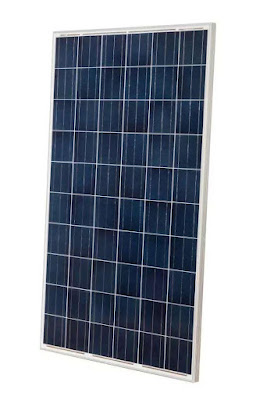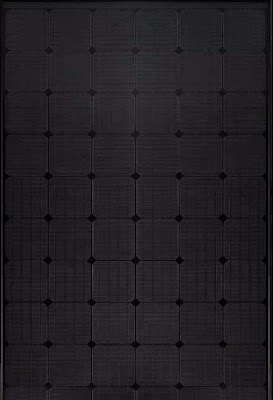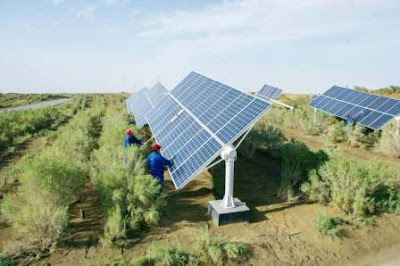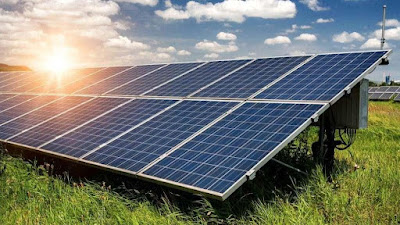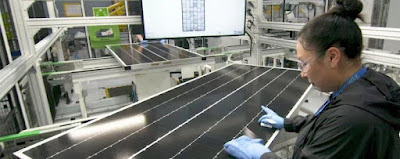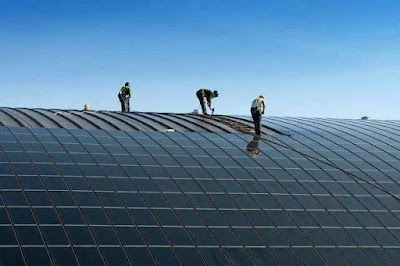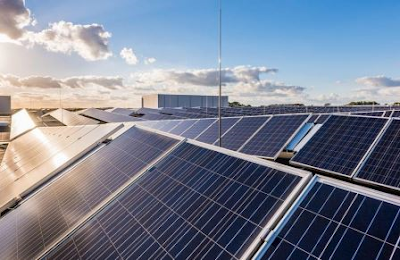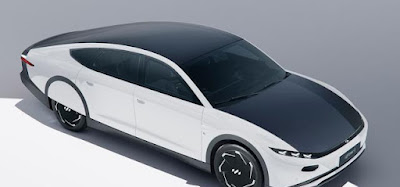Main solar panels available in the present markets are roughly divided into two types: polycrystalline and monocrystalline due to the different power generation cells used. Among them, monocrystalline solar panels can be divided into general black and all black because of the difference in appearance.
Polycrystalline solar panel
The most important feature of polycrystalline solar panels is the obvious blue-color the solar cells, white backplane, and silver aluminum alloy frame. The characteristics are low power (270 watts to 285 watts of power generation per module), low price, and less beautiful. Therefore, it is mainly used in large-scale solar power plants, industrial buildings, farms, warehouses, restaurants, and the horizontal roofs of some office buildings, etc. The location of these projects is generally high and the area is large, and the appearance of the module itself does not need to be considered, so the price has become the main trade-off criterion, and polycrystalline modules are the first choice for these projects. Summary of the characteristics of polycrystalline modules: low power generation efficiency, blue appearance, silver frame, and relatively cheap price.
General black monocrystalline solar panel
Among the solar panels installed by Dutch residents, monocrystalline black modules are the main ones. The appearance of this module is a black power generation cell, a black backplane and a black aluminum alloy frame, and the cell maintains the original silver grid line. Compared with polycrystalline modules, the general black monocrystalline modules have a great improvement in appearance, and are generally suitable for installation in the sloping roof of residential houses facing the sun, maintaining the appearance of the house and making the neighbors and passers-by bright, so This kind of module is widely installed on the roofs of local households in the Netherlands. Generally, the composition of the system ranges from a few pieces (about 2500 watts) to a dozen pieces (about 5000 watts), depending on the specific needs. At the same time, the power generation efficiency of general black monocrystalline modules has also been significantly improved. Generally, the power generation power of each module is 305 watts to 320 watts. Of course, the price will also be slightly higher than that of polycrystalline blue solar panels. Summary of the characteristics of common black monocrystalline solar panels: high power generation efficiency, good appearance and moderate price.
All Black Solar Module
The so-called all black is to use the most advanced technology to make the appearance of the solar panel dark and shiny, making your photovoltaic roof the most beautiful roof on the whole street. The biggest difference between all-black monocrystalline solar panels and general black monocrystalline solar panels is that the silver grid lines on the power generation cells have turned black, which is integrated with the black power generation cells, which greatly improves the appearance of the module. , is the most eye-catching product on the market today. Although the single-chip power of all-black mono-crystalline is slightly lower than that of ordinary black mono-crystalline (300W to 305W), its proud appearance makes it more and more popular in the installation market. More and more are installed on dark roofs. Installing all-black monocrystalline modules on the roof improves the overall appearance of the house to a certain extent and becomes a beautiful scenery in the community, even though its price is the highest among the three modules. Summary of the characteristics of all black monocrystalline modules: moderate power generation efficiency, excellent appearance, slightly higher price
